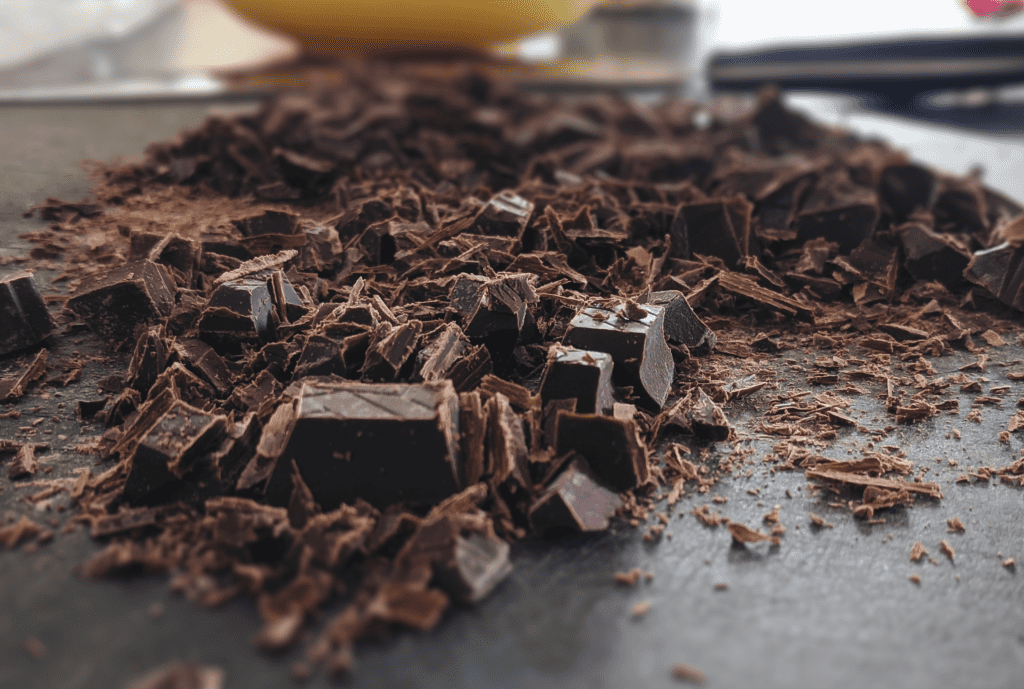Think about a time when you’ve had some delicious chocolate. What do you remember — the taste, surely; but also the texture and consistency, right? Whenever we eat something, especially something good, the texture also stands out. But what’s the best chocolate texture, and how do you get it?

As any baker worth his salt knows, chocolate is tough to work with. You heat it, and it melts. You cool it back down, it may not have the same structure. If you want to obtain specific properties, you have to be careful about what you add to the mixture, how you add it, and how you cool down the chocolate.
So a group of researchers led by André Souto from the University of Amsterdam did just that. They carefully heated up a chocolate mixture, added some cold chocolate, and repeated until they obtained the desired mixture — after which they put it in a 3D printer. Essentially, they made the chocolate a metamaterial.
Metamaterials are materials engineered to have properties that are not naturally occurring. Souto and colleagues made a chocolate metamaterial, tweaking its structure in very specific ways that would make it more appealing. They started out with an S-shaped chocolate with many twists, to see how the material withstands turning and when it breaks. The y then moved on to more complicated curvy shapes.

The chocolate was tested both mechanically, with equipment, and with the help of a panel of ten (lucky) participants.
The breaking properties of the chocolate depended on the direction of the biting. When the biting came from above, cracks multiple cracks appeared, stacked onto each other. But when the biting came perpendicularly, just one crack usually appeared.
This poses an interesting challenge, because most people enjoy more cracks in their chocolate. So to design a more appealing piece of chocolate, you want it to crack a lot no matter how you bite it. As it turns out, you can program this with metamaterial chocolate.

The researchers experimented with various spiral-shaped chocolate pieces (such as the ones displayed above). They found that the number of windings does indeed affect the cracks, and the human test panel can differentiate (and appreciates this). The more intricate the shape, the more people appreciated it. Sound recordings also showed that chocolate pieces with more windings make a more pleasurable sound when bitten.
But another consideration is bite strength.
It’s not just about making chocolate that cracks, it’s also about making it just the right strength. If it’s too soft or too hard, it just doesn’t feel right. So the researchers worked with mathematical models to optimize the shape of chocolate with respect to cracks, as well as resistance to breaking from various directions. They came up with shapes like the ones below.

Ultimately, the use of metamaterials can help researchers develop more appealing chocolate, but there are also less frivolous uses for metamaterials in food. This new research paves the way for foods that are more enjoyable to eat, but also more sustainable and easier to eat. The food industry is becoming “smarter”, and geometry is becoming an important aspect of gastronomy.
For instance, a couple of years ago, another team developed morphing, shape-shifting pasta, finding that this not only affects flavor and enables the enrichening of pasta with other materials.
The possibilities are endless — and they sound delicious.
Journal Reference: Edible mechanical metamaterials with designed fracture for mouthfeel control, André Souto, Jian Zhang, Alejandro M. Aragón, Krassimir P. Velikov, and Corentin Coulais. Soft Matter Soft Matter, 2022, 18, 2910 – 2919.






